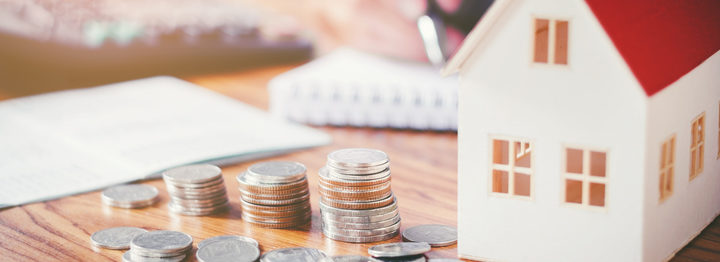
When you finally decide that you’re ready to buy a house – or sell your current home and buy another – one of the first questions you ask yourself is, how much can I afford?
Inquiring about affordability is smart. Unfortunately, getting a clear answer isn’t always simple. Every real estate agent, lender, financial advisor, and homeowner has a different opinion on how much house is okay to own. But regardless of what number or ratio people land on, everyone agrees that there’s no benefit to being house poor.
The definition of being house poor is purchasing more house than you can afford, in such a way that it causes you to spend a disproportionate amount of your monthly income on mortgage payments and utility expenses, which places a strain on your budget and forces you to make unrealistic compromises in other areas of your life.
The exact financials of what it means to be house poor differs based on the individual. It’s all about the borrower’s ability to make monthly payments – not the cost of the home.
“For example, a really wealthy individual could buy a multi-million dollar home, but struggle to make mortgage payments because their lifestyle is too extravagant,” mortgage expert Colin Robertson writes. “At the same time, someone making less than the national median household income could buy a much cheaper home, but still be house poor.”
When your income minus your basic living expenses equals zero (or close to it), your expenses are way too high. And in most cases, it means you’re house poor.
No matter how much you like a house, it’s not worth it if it’s going to make you house poor. There’s really no explanation needed beyond this.
Most people agree that being house poor doesn’t sound like a whole lot of fun. Inevitably this leads to a discussion on affordability and how to find a house that fits your budget.
Here are a few tips, formulas, and rules of thumb to think about:
There are a bunch of online calculators that will tell you how much house you can afford. While it’s always interesting to plug in your numbers and see what they say, the data they spit back out is usually very unrealistic.
For example, this calculator says that a family making $70,000 per year with a $5,000 down payment can afford a $300,000 house and a $2,100 monthly mortgage. Considering that the take-home pay on a $70,000 salary is probably somewhere around $4,500, this would mean nearly 50 percent of the family’s salary would be going towards the mortgage. Add taxes, insurance, and utilities, and there’s only a couple thousand dollars left over for food, auto expenses, clothing, saving, etc. That’s a little tight!
Ultimately, it’s up to you to decide what you think you can afford. But if you want to play it safe, the 25 percent rule is a good place to start.
This rule states that your monthly payment (principle, taxes, and insurance) should amount to no more than 25 percent of your monthly take-home pay on a 15-year fixed-rate mortgage. Using the above example, the family making $70,000 per year could realistically afford a home somewhere around $150,000. That may sound really low, but remember – we’re trying not to be house poor.
One of the biggest mistakes homebuyers make is failing to account for the hidden expenses of home ownership. These include:
There should be enough room in your monthly budget that you can easily pay for an unforeseen expense without going into debt or moving a bunch of money around.
There’s nothing wrong with putting off your home ownership aspirations for a couple of years to save up a bigger down payment. In fact, this is the smart thing to do.
While a lot of banks will offer loans to people who put three to five percent down, it’s not the smartest idea to enter home ownership with such little equity. Not only does it make your monthly payments really high, but it also hurts your debt-to-income ratio (which impacts your prospects of getting other types of loans).
The goal should be to put a 20 percent down payment on any house you buy. This won’t always be realistic, but it allows you to avoid PMI insurance (which typically costs 1 percent per year per $100,000 borrowed).
When it comes to the Houston real estate market, Green Residential is one of the most trusted and respected names in the industry. Whether you’re looking for someone to help you buy or sell a home, manage rental properties, or provide guidance on how to proceed, we have experienced professionals ready to help. Contact us today to learn more!
